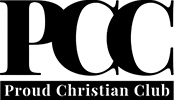For those who’re praying for a miracle in 2025, likelihood is you are not alone.
Perception in miracles has seen a major enhance over the previous few many years, particularly amongst Evangelicals and people with graduate levels in the USA, in response to a current survey.
The findings, which had been summarized in a report final September from statistician and pastor Ryan Burge and drawn from the U.S. authorities’s Common Social Survey, counsel important shifts in how People view the supernatural, with notable will increase in perception amongst Evangelical Protestants, black Protestants and people with larger schooling.

Get Our Newest Information for FREE
Subscribe to get each day/weekly e-mail with the highest tales (plus particular gives!) from The Christian Publish. Be the primary to know.
In 1991, Evangelical Protestants and black Protestants had been the most certainly teams to report sturdy perception in miracles, with round three in 5 (60%) expressing particular perception, whereas Catholics and mainline Protestants had been much less inclined to imagine. In actual fact, solely 43% of Catholics and 35% of mainline Protestants reported that they “undoubtedly imagine” in miracles, the survey discovered.
Nonetheless, between 1991 and 1998, the interval marked a noticeable enhance in perception in miracles throughout all Christian teams. Evangelicals skilled an 11 proportion level soar from 60% to 71%, whereas Catholics and mainline Protestants reported will increase as nicely. Mainline Protestants, for instance, noticed a major rise from 35% to 48%.
For Evangelicals, the assumption in miracles continued to develop all through the next many years, the evaluation reveals.
By 2008, 79% of Evangelicals reported a powerful perception in miracles, and that quantity climbed to 81% by 2018, marking a pointy 20-point enhance from 1991 to 2018 amongst Evangelicals. Equally, perception amongst black Protestants additionally grew considerably, leaping 18 proportion factors from 60% in 1991 to 78% in 2018.
The pattern for Catholics and mainline Protestants, nevertheless, was barely completely different. Each teams noticed their peak perception in miracles in 2008, however perception receded considerably by 2018.
Catholics, as an illustration, dropped from 53% in 2008 to 51% in 2018, whereas mainline Protestants skilled a decline from 60% in 2008 to 55% in 2018. Regardless of this, the info nonetheless signifies that each teams reported larger ranges of perception in miracles in 2018 in comparison with the early Nineteen Nineties.
Burge’s evaluation highlights the generational facet of perception, displaying that older generations report elevated perception in miracles as they age. For instance, people born within the Nineteen Thirties had a 56% perception in miracles in 1991. By 2018, that quantity had grown to 66%.
This information, Burge wrote, signifies that perception in miracles can strengthen over time, particularly for older generations.
“The info factors to a reasonably nuanced image relating to how perception in miracles modifications throughout the life course,” wrote Burge, an affiliate professor at Japanese Illinois College. “It does seem like the older generations did report a rise in perception as they aged.”
Maybe much more shocking is the rise in perception in miracles amongst extremely educated People, who’re historically seen as extra skeptical of supernatural beliefs. In line with the report, in 1991, solely 45% of People with a bachelor’s diploma mentioned they “undoubtedly imagine” in miracles. Nonetheless, by 2018, that quantity had risen to 63%.
The rise was much more dramatic amongst these with graduate levels: in 1991, simply 30% of people with not less than a grasp’s diploma reported perception in miracles, however by 2018, that quantity had surged to 61%.
“Within the early Nineteen Nineties, people with school levels had been considerably much less prone to imagine in non secular miracles than these with a highschool diploma,” Burge wrote in a tweet. “That is not true anymore. There is no such thing as a statistical distinction between undoubtedly believing in miracles throughout ranges of schooling.”
In a Jan. 8 report, The Colson Middle’s Breakpoint famous that whereas an increase in secular beliefs in miracles can typically pave the best way for an openness to the supernatural — a perception that, if exploited, might lead to large deception.
“Secular spirituality is much from revival,” wrote Breakpoint’s John Stonestreet and Shane Morris. “Christians know of those different forces able to counterfeit ‘miracles’ however that lead away from the Approach, the Fact, and the Life. This could trigger us to cry out for mercy for individuals who are being deceived.”


















